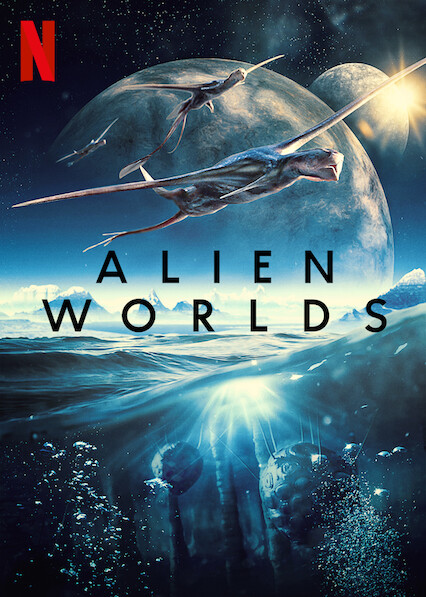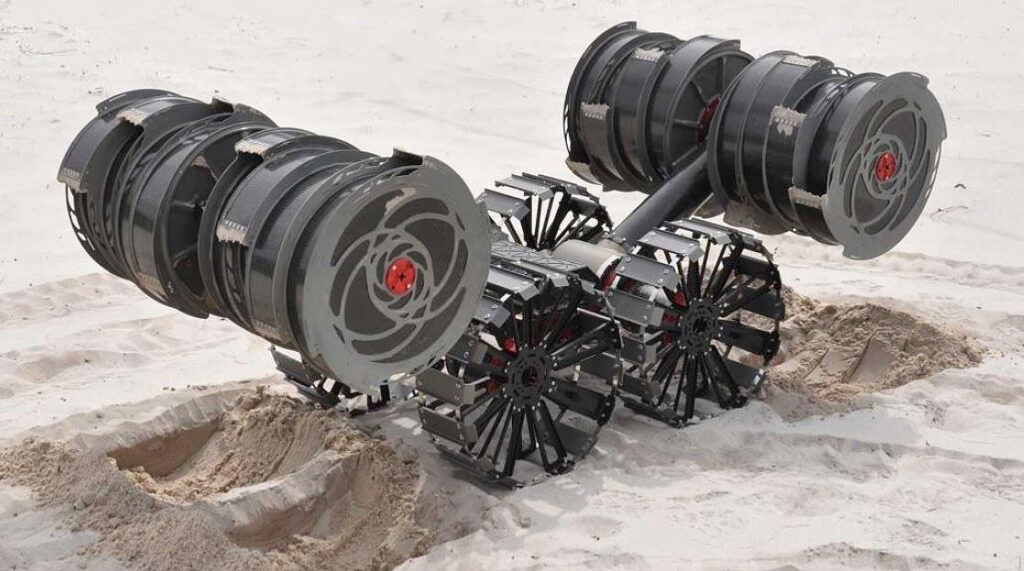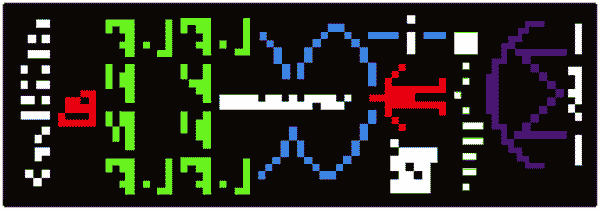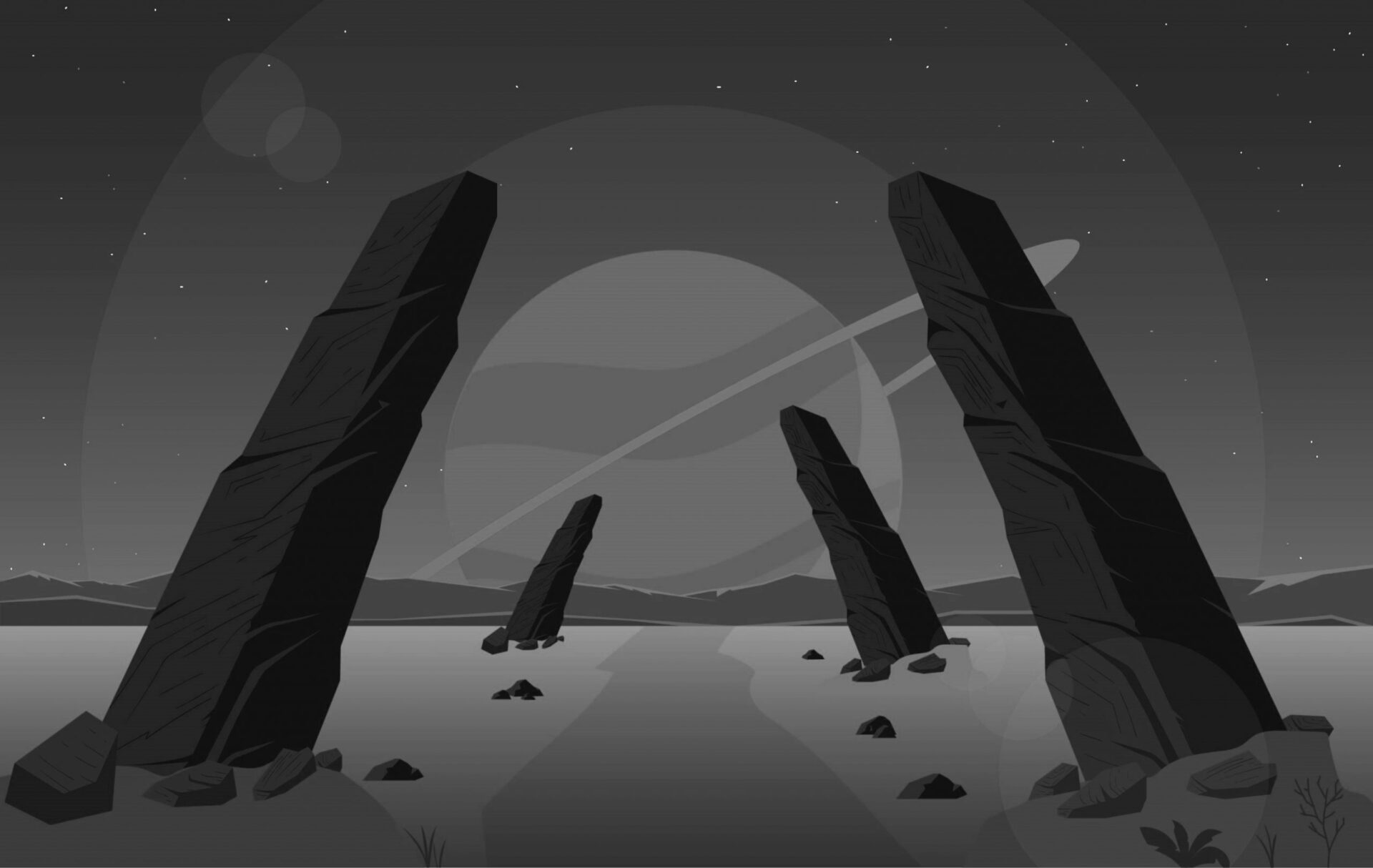Back in December 2020 Netflix released a documentary entitled Alien Worlds that covered the topic of exoplanets and speculative evolution. Each of the four episodes presents a different planet and, at the time, I covered the first three planets (Atlas, Janus and Eden). These episodes were focused on speculative evolution but the last was more about technology. I initially stopped since Exocosm was only covering exoplanets and speculative evolution. With the inclusion of technology in the blog scope now is the time to complete the series just in case a second season is ever released!

Intelligent Aliens
Since this episode is about intelligent alien life, it begins with a brief discussion on Area 51 and alien conspiracies. There’s not much to say about this. As with most conspiracies, they provide ample inspiration available to contribute to fictional world building. It is after all already fiction…
The reason why most ufology sounds like a science fiction story is it is a science fiction story.
Adam Frank, astrophysicist
In fact, the “super intelligent” aliens described in this episode are just brains floating in nutrients within a glass cube. These cubes are arranged in rows within artificial domes and maintained by robots. It is said that over time they’ve “evolved” not to need bodies but that’s a bit of an error. This would be far more likely to be a conscious choice and not the result of evolution.
These aliens are described as never aging, never dying and being connected together to think as one single hive mind. Presumably this is achieved via an advanced brain-computer interface and the aliens then experience life through a virtual reality environment. Such a way of life is a not unreasonable future extrapolation for both humans and aliens. After all, it is only an extension of the smartphone zombie phenomena…
Clearly there’s not much of a link with speculative evolution here, though a brief mention was made of how octopuses can seem quite alien. At least they didn’t go as far as the unsurprisingly extremely controversial paper (Cause of Cambrian Explosion – Terrestrial or Cosmic?) that suggests octopuses are aliens!
Thus the possibility that cryopreserved Squid and/or Octopus eggs, arrived in icy bolides several hundred million years ago should not be discounted as that would be a parsimonious cosmic explanation for the Octopus’ sudden emergence on Earth ca. 270 million years ago.
Cause of Cambrian Explosion – Terrestrial or Cosmic?
Terra
The planet on which these aliens live is called Terra. That’s a bit confusing since that’s a common name for Earth in science fiction. The stellar parameters clearly show it is not supposed to be a future Earth though that would perhaps have been more interesting.
- Stellar Class: G-class
- Stellar Temperature: 5,200 K
- Stellar Intensity: 1.15 L☉
- Orbital Distance: 0.83 AU
- Mass: 5.3 x 1024 kg
- Diameter: 13,652 km
- Gravity 1.14 g
- Average Temperature: 25.5°C
- Atmospheric Density: 1.4 kgm-3
- Orbital Period: 327 days
The first thing to note is that Terra continues the Alien Worlds problem of having inconsistent planetary and stellar parameters. Terra is described as being slightly less massive than the Earth yet also being slightly larger. This would result in it having lower surface gravity, not higher surface gravity.
Using the mass and radius parameters it is possible to calculate the surface gravity using the appropriate equation:
\[g = \frac{GM}{R^2}\]
\(G\) is the gravitational constant, \(M\) is the mass of the planet and \(R\) is the radius of the planet. This produces a value of 0.77 g not 1.14 g, though ultimately this has no influence on anything else. It’s rather perplexing why this inconsistency occurs though.
Anyway, the key part of the episode is that Terra’s sun is twice as old as the Sun and is nearing the end of its life. As the star runs out of hydrogen fuel to consume there is a drop in the radiation pressure that normally prevents gravity from compressing the core. As the core compresses this releases energy which allows the outer region of the star to expand and become more luminous. This is the beginning of the formation of a subgiant which will ultimately form a red giant.
The result of this is that Terra is now barren and lifeless. The alien’s civilisation is in peril, so they decide to move to a planet that is further away from the star and is presumably only now becoming habitable as it receives more illumination.
This strategy is a little confusing for such a technologically advanced and (allegedly) super intelligent species. Given their apathy towards their physical bodies surely they would be happy to live in a space habitat rather than on a planet’s surface. Assuming they don’t need gravity then they wouldn’t even need to bother creating a spinning O’Neill cylinder. A giant (borg?) cube with their brain jars stacked efficiently would surely be better, wouldn’t it?
New Terra
The planet they are moving to is called New Terra. While these aliens may be super intelligent they have clearly lost their ability to creatively name things!
- Orbital Distance: 1.94 AU
- Mass: 8.5 x 1023 kg
- Diameter: 10,853 km
- Gravity 0.86 g
- Average Temperature: 11.4°C
- Atmospheric Density: 0.9 kgm-3
- Orbital Period: 712 days
As before, the surface gravity is incorrect. Using the previous equations produces a surface gravity of around 0.20 g instead of the 0.86 g quoted. That’s only slightly higher than the Moon, though presumably that wouldn’t bother a brain in a jar. This is hardly unexpected as New Terra is 33% more massive than Mars but has a 60% larger radius.
The orbital period is also wrong given the specified orbital distance. This can be seen from Kepler’s Third Law:
The ratio of the square of an object’s orbital period with the cube of the semi-major axis of its orbit is the same for all objects orbiting the same primary.
Johannes Kepler
Assuming the orbital distance is correct then the orbital period should be around 1,169 days. Sometimes it feels that the planetary values on Alien Worlds are created using a random number generator.
A “problem” the aliens faced with New Terra is that it had no atmosphere and therefore needed to be terraformed so that it resembles Terra. I guess that explains why the planet is called Terra in the episode, but it does raise two unanswered questions:
- How would a planet with such a low surface gravity maintain an atmosphere?
- Since the aliens live in jars in sealed domes why do they even need an atmosphere?
Robots
Leaving aside why they are bothering to terraform New Terra, there is also a discussion about the robots who maintain the aliens’ technology. It is these robots who are terraforming New Terra before the aliens arrive in their space ship domes.
The alien robots shown are simple levitating ellipsoids and no further detail is provided. However, there is an interesting display of NASA’s Regolith Advanced Surface Systems Operations Robot (RASSOR) Excavator. It is designed to load, haul and deposit regolith (the loose material on the surface of some planets and moons) under low gravity conditions. It is basically a remotely operated space mining robot.

The purpose of this is to gather the raw materials to allow the manufacture of fuels, air and building materials. A 3D printer like arrangement was then demonstrated to be able to “print” a replacement wheel for RASSOR.
A robot part, made by a robot, for another robot using space materials.
Philip Metzger, planetary physicist
Taken to extremes, such self replicating robotic technology with artificial intelligence is a staple of science fiction. Perhaps it all begins with RASSOR though it does look less scary than Skynet.
Energy
An important factor in enabling these robots and their terraforming activities is the availability of energy. This is relevant in worldbuilding, whether science fiction or fantasy, since advanced civilisations require an abundance of energy in some form or another.
The more energy a civilisation can access, the more powerful it becomes. That’s the secret of progress.
In this episode solar panels are described as the power source. In particular the Noor power station in Morocco is mentioned as the world’s largest concentrated solar power plant. These systems use large arrays of mirrors to focus sunlight onto a single point which becomes extremely hot and can be used to generate electricity. Presumably these would be common in a solarpunk world.
Since the aliens are advanced they instead use space-based solar power from satellites orbiting the sun at a close distance. Unfortunately, the expanding and flaring sun has a habit of destroying these systems as apparently they didn’t include any protective measures.
Undoubtedly there is a lot of potential in solar power whether it covers a large area of land or forming a Dyson sphere of solar collectors to envelop a star. However, if the availability of energy is what drives a civilisation then it is also necessary to consider nuclear power generation, whether fission or fusion. The combination of the two is likely to be the basis of many science fiction worlds. Can fantasy worlds do the same?
Communication
The final section considers whether any aliens in the universe would know of our existence. The famous 1974 Arecibo message was transmitted from the Arecibo radio telescope in Puerto Rico. It was broadcast towards the M13 globular cluster which is about 25,000 light years away. Therefore, the earliest we can expect an answer is in the year 51,974. I guess that’s enough time for the WH40K timeline to happen with some time left to spare!
If you want to prove that you are intelligent, then all you have to do is decode the message that was sent as shown below…

Sadly, the month before Alien Worlds was released, the Arecibo Telescope was closed due to safety concerns and the lack of available funds for maintenance. On 1st December 2020 the 900 ton receiver fell 400 feet onto the dish below, permanently destroying the telescope.
The Arecibo telescope definitely won’t be used to send more messages to nearer stars as was proposed in the episode. Just to bring this back to the opening point, perhaps there was a (fictional) conspiracy involved to stop that from happening, or perhaps it was just caused by government budget cuts?
Conclusion
This was probably the weakest episode of the four and it strayed from the speculative evolution presented in the previous three. While each of the individual components of the story being told were interesting, when combined they didn’t really make much sense. There was also not enough time to really investigate them in the depth that is required.
With that said, it is still worth watching to provide inspiration for science fiction worldbuilding. Hopefully there will be a second series though I am unaware of Netflix having made an announcement either way yet.
Finally, it closes with an extremely appropriate quote for worldbuilding.
Astronomers think it is only a matter of time before some alien lifeforms are discovered. Among them perhaps intelligent beings. One day we will know for sure. Until then, we can only guess at who, or what, is out there.
